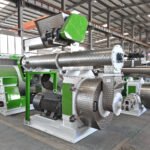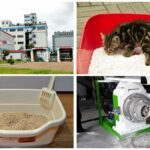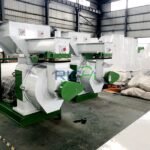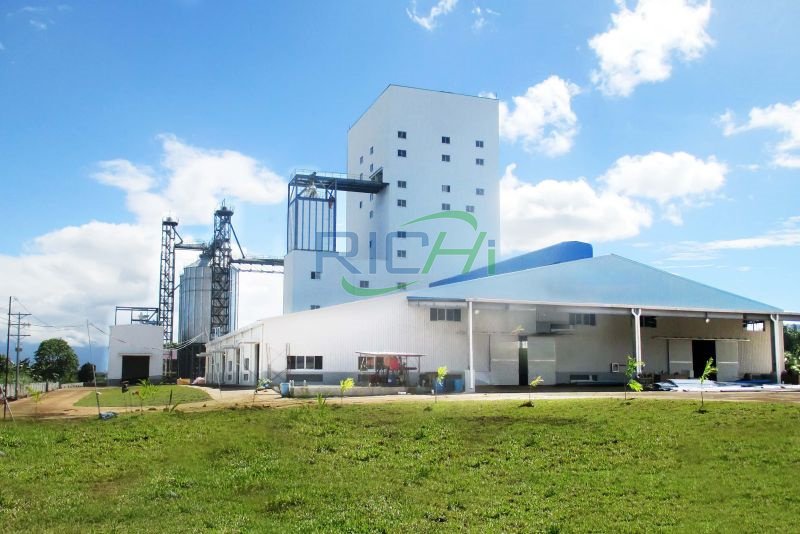Introduction
In the dynamic landscape of poultry farming, the ability to produce high-quality feed on-site has become a critical competitive advantage. With the growing emphasis on efficiency, biosecurity, and cost control, many farmers and agribusinesses are turning to poultry feed pellet machines as a smart investment. However, choosing the right machine can be a daunting task, especially with the diverse options available in the market.
This article provides a comprehensive guide on what to consider when selecting the ideal poultry feed pellet machine. From understanding your production scale to evaluating machine specifications, power consumption, and automation features — this guide is tailored to help poultry farmers make informed, profitable choices.

1. Understanding Your Farm’s Needs
Before exploring machine options, it’s essential to assess your specific farming operation.
1.1. Type of Poultry
Different poultry species have distinct dietary needs and pellet preferences:
- Broilers: Require energy-rich, protein-dense pellets for rapid growth.
- Layers: Need calcium-rich, balanced pellets to maintain egg production.
- Ducks/Turkeys/Quail: May require varying pellet sizes and moisture content.
Choose a pellet machine capable of adjusting die size and pressure for different species.
1.2. Daily Feed Requirements
Estimate your daily feed production need based on bird count and feeding schedule.
| Flock Size | Feed per Bird/day | Total Feed/day |
|---|---|---|
| 1,000 | 120g | 120 kg |
| 5,000 | 130g | 650 kg |
| 10,000 | 140g | 1.4 tons |
This determines whether a small flat die machine or a larger ring die model is suitable.
2. Types of Poultry Feed Pellet Machines
There are two main types to choose from:
2.1. Flat Die Pellet Machine
- Best for: Small to medium farms (up to 2000 birds)
- Advantages: Low cost, easy to operate, compact size
- Limitations: Lower capacity, may wear out faster
2.2. Ring Die Pellet Machine
- Best for: Large farms and commercial operations
- Advantages: High output, energy-efficient, durable for continuous operation
- Limitations: Higher initial investment, more complex operation
Choose based on your current and future production needs.
3. Die Size and Pellet Dimensions
Pellet size affects feed intake and digestion. Most poultry prefer pellets between 2–4 mm in diameter.
Ensure the machine allows for:
- Interchangeable dies (2mm, 3mm, 4mm, 6mm)
- Custom pellet length control
- Sturdy die material (e.g., alloy steel or stainless steel)
Also, consider the ease of changing dies during production.
4. Material Compatibility and Pre-processing
Your choice of raw materials (corn, soybean meal, wheat bran, rice husk, etc.) affects machine design.
Questions to ask:
- Can the machine handle high-fiber or coarse ingredients?
- Is a grinder or hammer mill included for uniform particle size?
- Is a mixer provided to ensure balanced nutrient blending?
Some machines offer complete processing lines with integrated mixing and crushing units for convenience.
5. Power Source and Energy Efficiency
Machines come in electric, diesel, or PTO-driven versions. Evaluate based on:
- Power availability: Are you in an area with stable electricity?
- Cost-efficiency: Electric motors are cheaper long-term; diesel is better for off-grid farms.
- Motor size: Ensure your power supply can handle the motor (3kW–55kW)
Modern machines with energy-saving motors and automated temperature control help reduce operating costs.
6. Production Capacity
Machine capacity should match your feeding cycle. Typical outputs include:
- 100–200 kg/h: Ideal for small farms
- 300–500 kg/h: Mid-sized operations
- 1–2 tons/h: Commercial scale
- 5+ tons/h: Industrial use with integrated pellet lines
Choosing a slightly higher capacity than your current needs allows for future expansion.
7. Durability and Build Quality
Key aspects of build quality include:
- Roller and die material: Hardened steel resists wear and heat
- Pellet chamber design: Stainless steel or cast iron lasts longer
- Gear or belt transmission: Gear systems offer higher torque for tough materials
- Cooling systems: Necessary for high-capacity ring die machines
Reliable machines from trusted manufacturers reduce downtime and maintenance costs.
8. Automation and Digital Controls
Modern poultry feed pellet machines offer:
- Digital control panels
- Temperature and pressure monitoring
- Auto lubrication
- Remote diagnostics
Automation minimizes human error, enhances safety, and ensures uniform pellet quality.
9. Maintenance and Spare Parts Availability
Regular maintenance ensures long machine life. Choose machines with:
- Easy access to internal parts
- Replaceable rollers and dies
- Manufacturer support for spare parts and technical service
Ask about warranty terms, service networks, and training programs offered by the supplier.
10. Price vs. Value
While pricing is important, avoid choosing purely on cost. Consider long-term ROI and hidden expenses.
| Cost Component | Details |
|---|---|
| Initial purchase | Machine price, shipping |
| Operating costs | Energy, raw materials |
| Maintenance | Spare parts, technician support |
| Downtime risk | Lost production during breakdowns |
| Output quality | Affects poultry performance |
A more expensive, well-built machine can save thousands over its lifecycle.
11. Manufacturer Reputation
Source machines from manufacturers with a track record of excellence. Look for:
- ISO or CE certifications
- Transparent customer reviews
- Customization options
- In-house engineering and R&D
- Export experience
Popular suppliers often offer turnkey poultry feed production lines, installation support, and recipe development.
12. Safety and Compliance
Feed machines must meet safety regulations for electrical systems, motor enclosures, dust control, and food contact surfaces.
Check for:
- Overload protection
- Emergency stop features
- Dust extraction compatibility
- Food-grade stainless steel (for mixing and extrusion)
Compliance ensures worker safety and legal operation, especially for export or commercial feed production.
13. Training and Technical Support
Proper training prevents operational errors and accidents. Choose a supplier that provides:
- On-site or virtual training
- Operator manuals and videos
- Preventive maintenance schedules
- Troubleshooting guides
- Ongoing support via phone/email
Well-trained staff ensure consistent quality and reduce machine misuse.
14. Local Conditions and Environmental Factors
Adapt your machine to your local environment:
- Humidity: Machines with cooling or drying systems are better in tropical regions
- Dust-prone areas: Need sealed chambers and extraction
- Temperature extremes: Require robust electrical systems and rust-proof materials
A machine designed for your climate lasts longer and performs more reliably.
Conclusion
Selecting the right poultry feed pellet machine is one of the most impactful decisions you can make for your poultry operation. It determines not only the quality and efficiency of your feed production but also the long-term sustainability and profitability of your farm.
By carefully assessing your production needs, budget, feed ingredients, and local conditions — and by partnering with reputable equipment providers — you can invest in a solution that pays dividends for years to come.
The ideal poultry feed pellet machine isn’t just a machine — it’s a strategic tool for growth, independence, and success in modern poultry farming.










